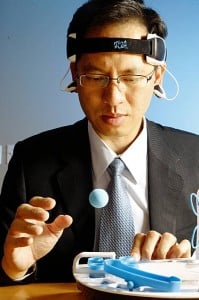This is the third of a series of articles on IP and Antitrust issues. This article deals with some specific types of licensing restrictions. This is not an exhaustive list of practices that attract antitrust scrutiny. The licensing restrictions dealt with here are tying arrangements, tie-outs, royalty arrangements, exclusive dealings, cross-licensing, pooling and grant backs.
This blog installment deals with licensing restrictions. As mentioned in the previous post, IP is just one cog in the machine of production process and its value is truly enhanced only when combined with other factors. Frequently an IP owner will sell his rights in the IP to another, enter into a joint venture agreement with a view to further develop his IP, license or cross-license his IP so as to integrate his IP with that of another. Most of these arrangements seem innocuous but are apt to attract antitrust scrutiny if competition suffers harm or if the agreements are improperly drafted.
A “tying” or “tie-in” arrangement is defined as “an agreement by a party to sell one product… on the condition that the buyer also purchases a different (or tied) product, or at least that he will not purchased that [tied] product from any other supplier”. Eastman Kodak Co. v. Image Technical Services, Inc., 112 S. Ct. 2072, 2079 (1992)
Tying may manifest itself in the requirement that a licensee purchase a product or service from the licensor as a condition of receiving a license, or a requirement that a licensee take a license on additional intellectual property as a condition of receiving the license it is seeking. In the Kodak case, tying-in was achieved by Kodak implementing a policy of selling replacement parts for micrographic and copying machines only to buyers of Kodak equipment who use Kodak service or repair their own machines.
Tying-in attracts antitrust scrutiny where (1) it involves two separate products or services; (2) that are tied together; (3) the supplier possesses market power in the market for the tying product; (4) the tie has an anti-competitive effect in the tied market; and (5) the tie affects a substantial volume of commerce. See Jefferson Parish Hosp Dist. No. 2 v. Hyde, 466 U.S. 2 (1984) where the dispute was regarding whether every patient undergoing surgery at the hospital must use the services of one firm of anesthesiologists and if not, whether the contract is illegal because it unreasonably restrains competition among anesthesiologists.
Tying-in assumes different forms such as package licensing, technological tying or tie-outs. Package licensing is not necessarily unlawful if both parties willingly enter into it and there is no coercion. As always market power is considered a deciding factor in such cases.
In the recent Microsoft case, technological tying is an issue that comes to the forefront. Technological tying involves using product design to combine two potentially separate products into one. In Microsoft’s case the operating system and internet browser were sought to be combined. The Court held that Microsoft’s exclusion of Internet Explorer from the Add/Remove Programs utility constituted exclusionary conduct. United States v. Microsoft, 253 F.3d 34, 66-67
Tie-out is essentially akin to restriction clause or a covenant not to deal in competing technologies. Such arrangements are a misuse of intellectual property and can attract antitrust scrutiny. Other kinds of restrictive covenants such as fields of use, prospective or existing customers, territories of work, price of object sold, quantity manufactured or the outputs of the licensee are also liable to be considered antitrust in nature.
Exclusivity refers to the license and whether the licensor can license the product in question to more than one licensee. Exclusive licenses are not illegal per se. However, an exclusive arrangement may attract antitrust scrutiny if the licensees or the licensor and licensee are in a horizontal relationship. (See Part II in the series for horizontal relations).
Grant backs require the licensee to grant the licensor the right to any intellectual property developed by the licensee. Such a provision can attract antitrust concerns if it limits the licensee’s incentive to innovate. According to the ABA Section of Antitrust Law, Intellectual Property Misuse: Licensing and Litigation (4th ed. 1997) the consequences related to a grant back may be antitrust depending on a number of reasons such as:
(1) whether the grant back includes technology that goes beyond the originally licensed intellectual property;
(2) whether the grant back is in the form of an assignment, exclusive license, non-exclusive license or an option;
(3) whether the licensee retains any rights under the intellectual property subject to the grant back;
(4) the duration of the licensee’s grant back obligation;
(5) the parties’ market power;
(6) whether the parties are competitors;
(7) whether the grant back is royalty-free;
(8) the effect of the grant back on the parties’ incentive to innovate;
(9) whether the licensor can sublicense the intellectual property that is the subject of the grant back; and
(10) whether the grant back promotes dissemination of improvements developed by the licensee, increases the licensor’s incentive to license or otherwise increases competition and output in the relevant market.
Cross-licensing and patent pooling as such do not attract antitrust scrutiny. However, there are instances where such arrangements have unlawful anti-competitive effects:
(1) where the arrangements include collective price or output restraints and do not contribute to an efficiency enhancing integration of economic activity;
(2) where the patent pool is exclusive and (a) excluded firms cannot compete in the relevant goods or service market without access to the technology and (b) the pool participants collectively possess market power; and
(3) where the pooling arrangement discourage or deters members from engaging in research and development (e.g. if the pooling arrangement includes mandatory grant back obligations, particularly at low royalty rates). United States v. Krasnov, 143 F.Supp. 184
This concludes the series on IP and Antitrust issues. In conclusion, intellectual property and antitrust issues must be considered as a whole and not divest of one another. The purpose of IP laws is to provide incentives to future inventors and for dissemination and commercialization of new technology. The antitrust laws strive to achieve the same goal of promoting innovations and consumer welfare. In the end, of course, each case is unique and must be considered in light of its own facts and circumstances. The Agencies’ guidelines and the legislation in this area have to be applied to each case keeping the facts in mind. Ultimately however, the two areas of law must be seen as complementary in nature and not independent.
The next topic in this series deals with different types of licensing restrictions.
See part I here: Intellectual Property & Antitrust Issues: Market Power
See part II here: Intellectual Property & Antitrust Issues: Licensing Practices
Today’s post is by Guest Barista Shalini Menezes of ::O.bi:t.er: D:ic.t:um.




